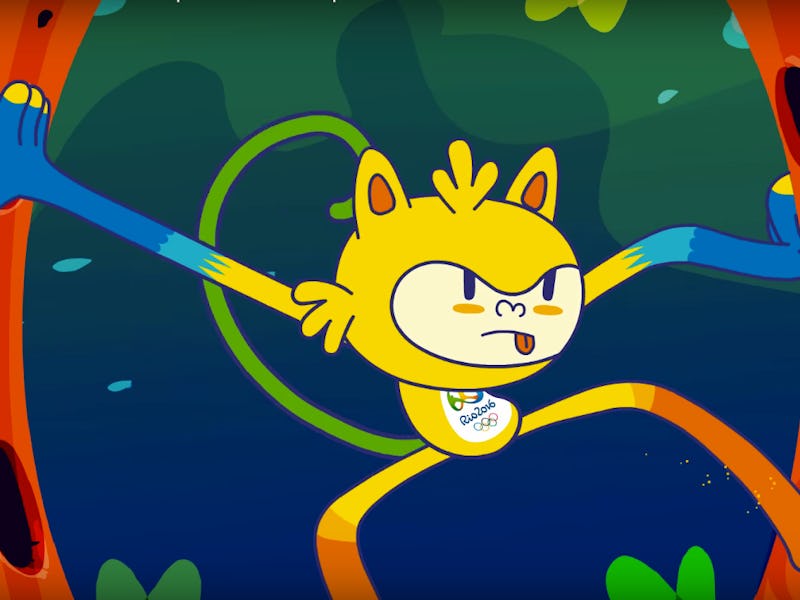How Mad Scientists Could Bring the Rio Mascot to Life
A cat-monkey-bird chimera? Sure, why not.

Meet Vinicius, the official mascot of the 2016 Olympic Games in Rio de Janeiro, Brazil. Vinicius is part cat, part monkey, and part bird. Vinicius is a chimera. A chimera is a single organism that has parts that come from genetically instinct organisms. It is named for a fire-breathing monster of Greek mythology that was part lion, part goat, and part snake.
But chimeras are not purely the stuff of myth. They occur in nature when the early-stage embryos of fraternal twins fuse and develop as one. One twin might give its genetic material to the lungs, say, and the other to the heart. This has caused some confusion, like when Lydia Fairchild was told that genetic tests showed she was not the mother of her own children.
Chimeras can also be produced in laboratories, even between species. In 1984 a team of Cambridge scientists fused the embryos of a sheep and a goat and implanted it in the uterus of a female sheep. The result was the birth of a healthy geep — and animal with some goat parts, some sheep parts. A chimera geep is different from a hybrid geep, which is when a sheep and a goat breed directly with each other. This results in blended features, whereas in a chimera you get a jumble: some goat bits over here, some sheep bits over there. If such a chimera were to reproduce, it would pass on its sheepiness or its goatiness, not both, depending on the genetic material of the gamete involved.
All of this is to say that yes, Vinicius could really be genetically engineered into a living, breathing creature if enough mad scientists had the time and resources to accomplish that goal.
Vinicius is clearly mostly a blend of cat and monkey, which is a good thing, since that will be the easy part. Those animals are not terribly closely related, though they are both mammals. A decade ago, attempts to make a chimera between such different species would fail as the mismatched tissues reject each other, but new gene editing technologies have made it possible to knock out the genes responsible for that immune response.
About 20 human-pig or human-sheep chimera pregnancies were initiated in the United States in 2015, according to MIT Technology Review. The purpose of this research is to find out if pigs or sheep could serve as incubators for human organs to be used in transplant. The pig embryo would be genetically engineered to develop without a heart, say, and then human stem cells inserted, with the idea being that the resulting animal would all pig, except for its heart of human tissue.
These animals have not been allowed to come to term — instead, the pregnancies have been aborted early on, so the researchers can analyze the fetus and make sure it is developing according to plan, and that human cells have started cropping up in unexpected places, like the brain. But they do show the potential for chimeras of distantly related mammals. Since monkeys and cats branched off the phylogenetic tree from each other at the same time as humans and pigs, we can assume that a chimera of the two is at least technically possible.
The next step is getting our little Vinicius some wings. While they aren’t obvious under most circumstances the Rio mascot clearly has some sort of soaring apparatus tucked under his fur. Fortunately, this appears to be his only bird-like feature, which makes the idea of adding a third type of animal to the chimera a little less daunting.
The best way to go about this, probably, is through advanced gene editing technology, like CRISPR, which allows for the targeted insertion of genetic material for a particular desired outcome. This area of research is hugely promising but still young. Chinese scientists already figured out how to make your pet beagle more muscled — with enough work it’s likely they could figure out how to turn fur to feathers.
Of course, the dream of a jumping, flying Vinicius will almost certainly never come true. Chimera research is highly controversial, and because of the animal and human ethics involved scientists have to be very careful that any work they do is being done for a very good reason. The researchers are too busy fighting for access to basic funding to concern themselves with engineering creepy, cartoonish creatures just to say they did.